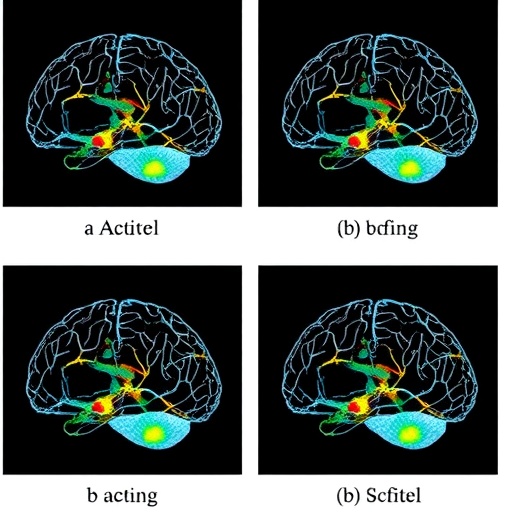Amyotrophic lateral sclerosis (ALS), commonly known as Lou Gehrig’s disease, has long baffled neuroscientists due to its relentless progression, universal fatality, and absence of effective treatments despite over 150 years of deep scientific inquiry. Central to the mystery is why ALS selectively attacks motor neurons—highly specialized nerve cells responsible for controlling muscle movements—while sparing other neuron populations. This question persistently challenges researchers, hindering therapeutic advancements and underscoring the need for novel investigative approaches.
In a groundbreaking study spearheaded by Dr. Kazuhide Asakawa at the National Institute of Genetics in Japan, researchers have harnessed the power of single-cell–resolution imaging within transparent zebrafish models to probe the cellular mechanisms behind motor neuron vulnerability in ALS. This innovative approach allowed them to observe, in unprecedented detail, the physiological status and stress responses of individual spinal motor neurons in a living organism, linking structural properties with cellular dynamics.
The team’s observations reveal that large spinal motor neurons, tasked with generating powerful body movements and notably susceptible in ALS pathology, endure an inherent and continuous burden related to protein and organelle degradation. These neurons consistently exhibit elevated basal activity in three critical cellular pathways: autophagy, proteasome-mediated degradation, and the unfolded protein response. Together, these mechanisms constitute the cell’s principal modalities for maintaining protein and organelle quality control, suggesting that large motor neurons are persistently engaged in managing extensive proteostatic stress.
Autophagy involves the sequestration and lysosomal breakdown of damaged organelles and misfolded proteins, while proteasome activity facilitates the degradation of ubiquitinated proteins that could otherwise aggregate and impair cellular function. The unfolded protein response is triggered by endoplasmic reticulum (ER) stress, initiating a molecular reaction aimed at restoring proper protein folding. Elevated baseline activity in these systems points to a metabolic state where motor neurons operate near their degradation capacity limits under normal physiological conditions.
Intertwined with this intrinsic stress profile is the role of TDP-43, a DNA/RNA-binding protein that has emerged as a pivotal player in ALS pathology. Functional impairment or loss of TDP-43 protein dramatically exacerbates the degradation burden. The researchers found that early-phase acceleration of protein and organelle turnover — induced by TDP-43 dysfunction — initially supports axonal growth and neuronal plasticity, indicating a compensatory cellular response aimed at maintaining motor neuron function under stress.
However, this adaptive response is a double-edged sword. Over time, persistent hyperactivation of degradation pathways overwhelms cellular homeostasis, accelerating pathological processes that culminate in selective neuronal degeneration. This exhaustion model sheds light on why considerable proteostatic strain precedes motor neuron loss, aligning with clinical observations of progressive functional decline in ALS patients.
Dr. Asakawa explains, “The sheer size and elevated metabolic demand of these large motor neurons impose a relentless degradation workload. Our findings help explain why these cells are predisposed to early degeneration in ALS, highlighting the degradation burden as a potential therapeutic target.” This insight opens the door to strategies aiming to mitigate proteostatic stress — for instance, by modulating autophagy or proteasomal activity — as a promising avenue for future ALS interventions.
This work not only clarifies the cellular basis for ALS motor neuron selectivity but also enriches the broader landscape of neurodegenerative disease research, in which protein quality control dysfunction is a recurring theme. By pinpointing the intrinsic vulnerabilities of neuron subtypes based on their biological and morphological characteristics, the study offers a refined framework for understanding and potentially delaying neurodegeneration.
Further, the use of transparent zebrafish as a vertebrate model for real-time, single-cell analysis underscores the transformative potential of advanced imaging techniques in neuroscience. The capacity to visualize protein degradation dynamics within living neurons may catalyze discoveries across multiple neurodegenerative disorders characterized by proteostasis imbalance.
The findings prompt a reconsideration of how cellular stress responses are managed within large neurons and their correlation with disease onset and progression. Increased baseline degradation activity suggests a perpetual cellular attempt to counteract accumulating proteotoxic stress but also reveals the thin margin between adaptation and failure. Understanding where this threshold lies in motor neurons could be critical to developing interventions that preserve neuron integrity before irreversible damage ensues.
This study enriches ALS research by linking the cell biology of motor neurons to their unique pathological trajectory. The interplay of cell size, metabolic demands, and stress-response pathways outlines a mechanistic narrative explaining why these neurons succumb preferentially. Moreover, the identification of TDP-43’s role in magnifying intrinsic degradation stress consolidates its status as a central molecular culprit, encouraging further research into ways to protect or restore its function.
By elucidating these complex cellular relationships, Dr. Asakawa and colleagues provide a compelling explanation for long-standing clinical observations and experimental findings. Their work offers a beacon of hope for future therapeutic development, suggesting that reducing the proteostatic load on vulnerable neurons might slow, halt, or even reverse the relentless march of ALS.
In summary, the discovery that large spinal motor neurons naturally operate under heightened degradation demands—and that the loss of TDP-43 exacerbates this stress culminating in cell death—represents a pivotal advancement in ALS pathophysiology. This study not only solves key pieces of the ALS puzzle but also sets a foundation for innovative neuroprotective therapies that target intrinsic cellular liabilities before disease manifestation becomes irreversible.
Subject of Research: Cellular mechanisms underlying selective motor neuron vulnerability in amyotrophic lateral sclerosis (ALS) through proteostasis and degradation burden analysis.
Article Title: [Not explicitly provided in source content]
News Publication Date: [Not explicitly provided in source content]
Web References:
National Institute of Genetics: https://www.nig.ac.jp/nig/
Research Organization of Information and Systems (ROIS): https://www.rois.ac.jp/en/index.html
DOI link to original paper: http://dx.doi.org/10.1038/s41467-025-65097-0
Image Credits: Kazuhide Asakawa, National Institute of Genetics
Keywords: amyotrophic lateral sclerosis, ALS, motor neurons, proteostasis, protein degradation, autophagy, proteasome, unfolded protein response, TDP-43, neurodegeneration, zebrafish model, neurobiology
Tags: ALS researchautophagy in motor neuronscellular mechanisms of ALSeffective treatments for ALSLou Gehrig’s disease insightsmotor neuron degenerationneurodegenerative disease studiesneuroscience advancements in ALSprotein degradation in neuronssingle-cell imaging in zebrafishspinal motor neuron vulnerabilitytherapeutic approaches for ALS




